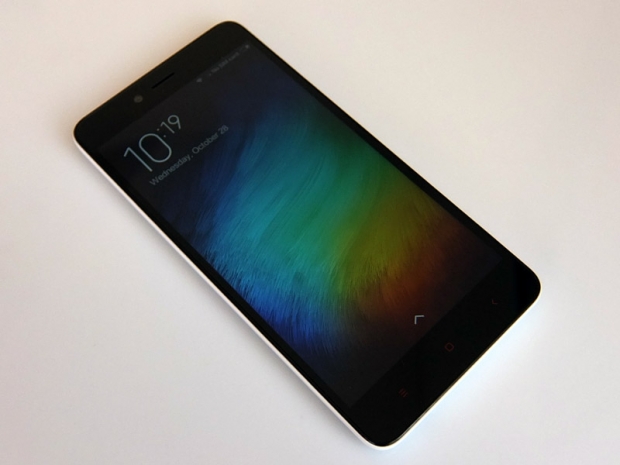Index
Review: MTK Helio X10 on a budget
Xiaomi’s second-generation Redmi Note was released a couple of months ago, and it started shipping just weeks ago, but you still can’t buy it directly if you happen to live in the west. Are Europeans and Americans missing out? Yep, they surely are.
It could be argued that Xiaomi drove the value phablet craze to new heights with the original Redmi Note, and with the Redmi Note 2 it’s raising the bar a tad higher. The company has tried to develop a competitive product that would best the competition in just about every aspect, and it did a good job.
The Redmi Note is based on MediaTek’s Helio X10 processor and it’s available in two versions. The standard version comes with a 2GHz processor, 2GB of RAM and 16GB of storage, while the “Prime” model comes with 32GB of on-board storage and a 2.2GHz processor.
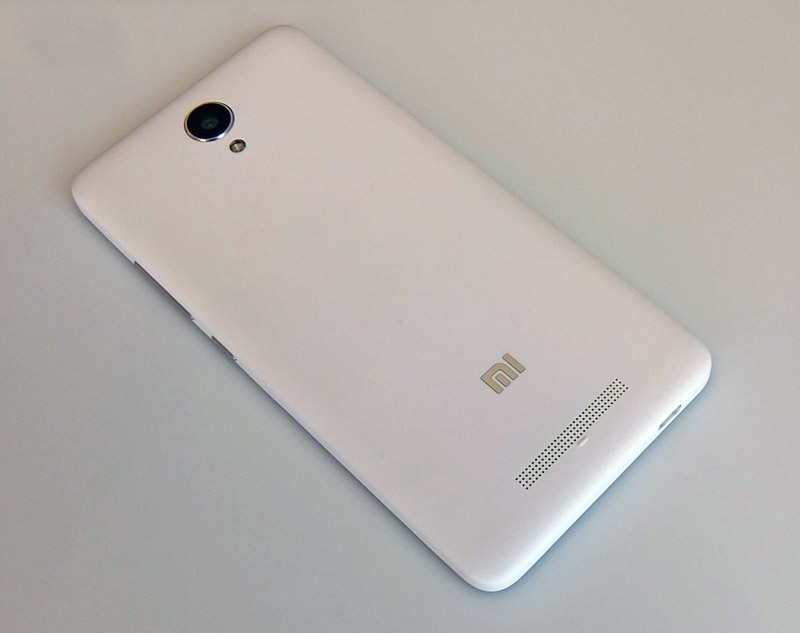
The screen size hasn’t changed, it’s still 5.5 inches, but this time around it’s a 1080p display rather than a 720p unit. The rear camera is a 13-megapixel job, while the selfie cam comes in at 5 megapixels.
With prices starting at $169 via resellers like Gearbest, the Redmi Note 2 sounds like a good deal, and it is. But wait: Xiaomi is no longer alone in this market segment. It has to take on other mainland China brands like Meizu and Lenovo. Some big brads with a foothold in western markets have also joined the budget phablet space, along with dozens of smaller brands.
Is the latest Redmi really better than the marginally cheaper Meizu M2 Note and Lenovo K3 Note? Let’s take a closer look.
Design and Build Quality
Measuring 152 x 76 x 8.3 mm, the Redmi Note 2 is a big phone, although it is somewhat smaller than its predecessor. The design is simple and utilitarian, but Xiaomi tries to keep it fun with a choice of several colours: white, black, pink, cyan and yellow.
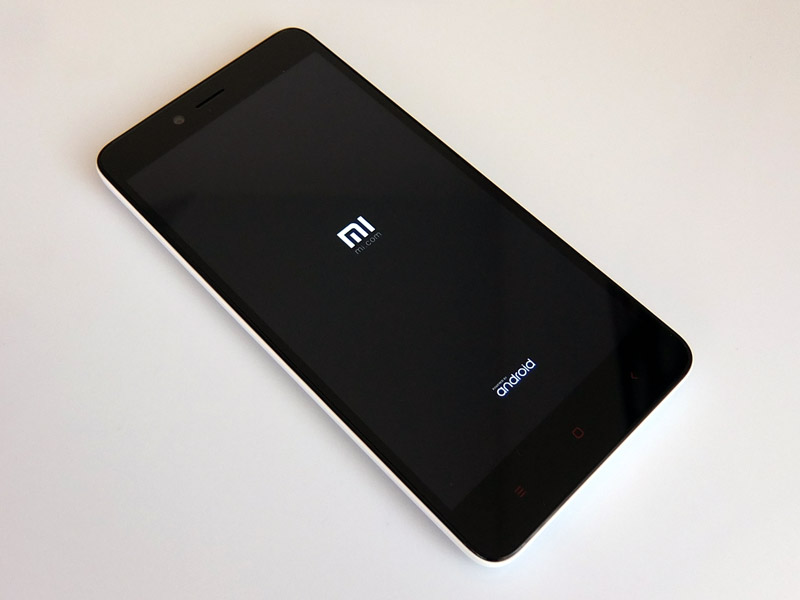
Yes, it looks a lot like the Xiaomi Mi4c, which we reviewed a couple of weeks ago, but the Redmi is noticeably bigger, the camera is positioned on the centre of the device, and the capacitive navigation keys feature red backlighting instead of white.
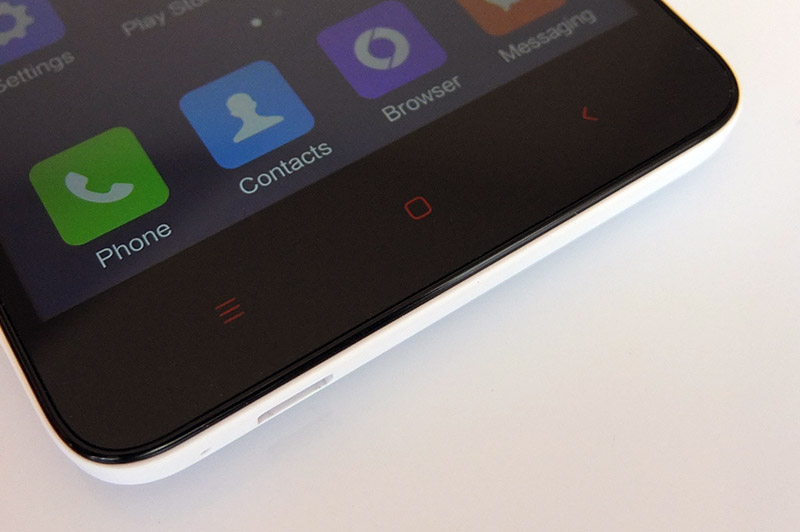
In terms of look and feel, these are the biggest differences from afar, but once you pick up the Redmi, you are bound to notice the different finish and build quality. Unlike the Mi4c, the Redmi Note 2 is not a unibody design. The back is removable, allowing access to SIM and microSD slots, and the replaceable 3060mAh battery.
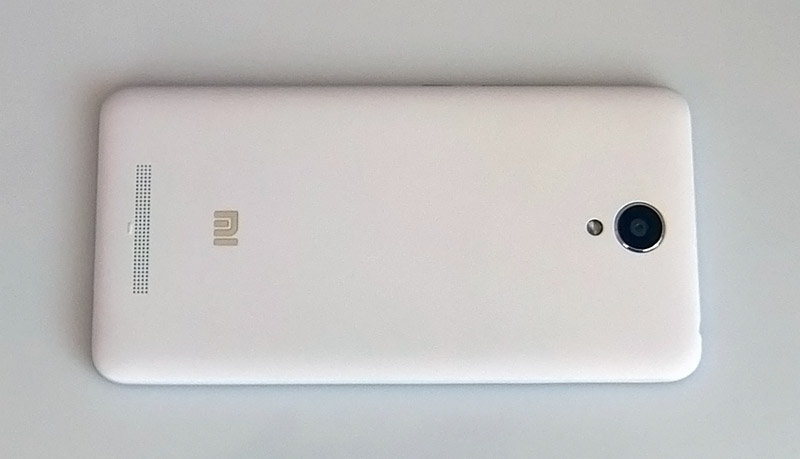
While they share a similar finish, the Redmi Note 2 doesn’t feel as good as the Mi4c, due to its removable back cover. The cover is a tight fit and can be tricky to pull off. However, once it’s in place, it feels quite good. We’ve seen reports of creaky covers on the Redmi Note 2, but our unit did not suffer from this issue. In fact, the rear cover felt a bit better than the one on the Lenovo K3 Note.

The finish is soft, matte and keeps smudges away. It feels rubbery and offers a bit more grip than the harder finish on the polycarbonate Mi4c. While it feels good, we also got an impression it attracts a bit more dirt than the polycarbonate on the Mi4c. Minor dents and scratches can “polish” the matte finish and the white version collected more than lint from our jeans – some colour from the fabric washed off on the finish. While a white, soft finish looks and feels good, we would choose a different colour option for ease of maintenance and peace of mind.
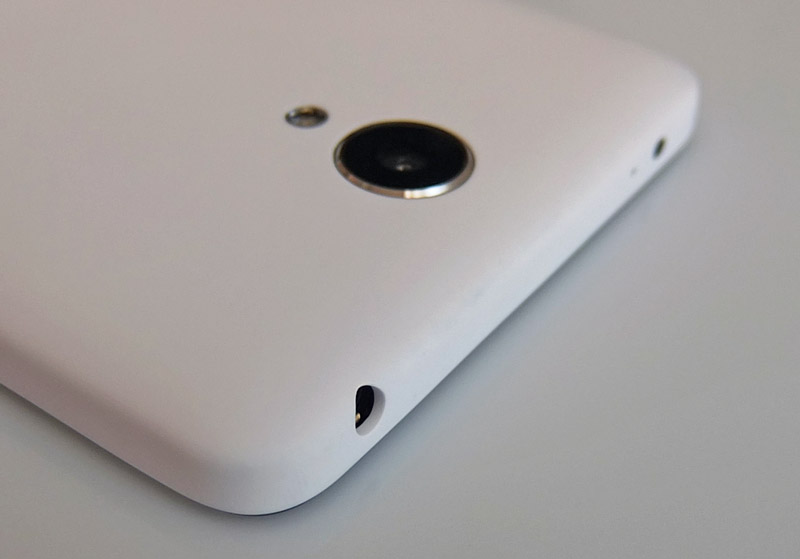
The 13-megapixel camera is located at the top centre, behind an oversized lens cover, surrounded by a chrome rim. There’s only one flash LED on board. The layout reminds us of Meizu’s Note series, although the Meizu M2 Note features two LEDs.

The Mi logo and speaker grille are at the bottom. A small plastic bump next to the speaker keeps it from being muffled on a flat surface.

The plastic volume rocker and power button are located on the right. They feature a chrome finish, smooth design, and offer good tactile response.

The Redmi Note 2 still relies on the micro USB standard, no Type-C connector here.

The front is dominated by the 5.5-inch panel, which is surrounded by a small plastic bezel. While 2.5D glass is all the rage, we still feel there’s a need for phones with a protective bezel, especially if they are marketed to young consumers (which the Redmi series is).
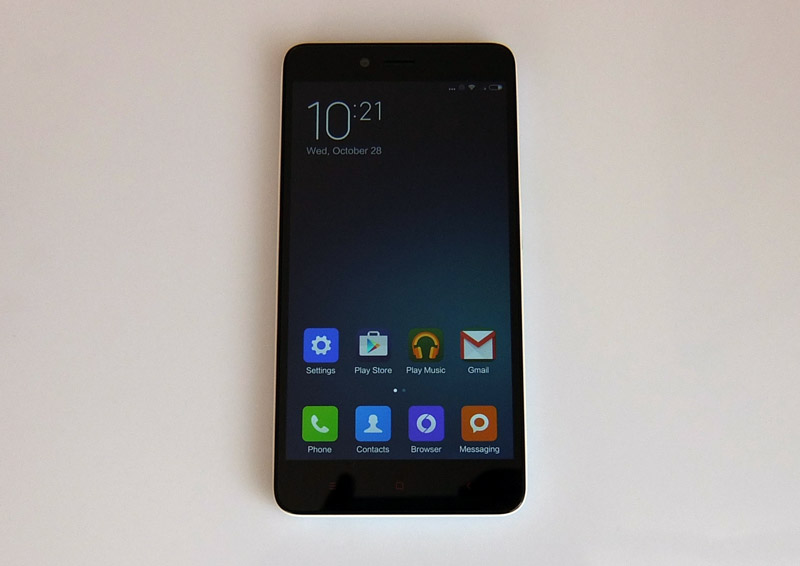
There is really not much more to say about the minimal design of the Redmi Note 2. It’s simple and utilitarian, but in case you want something flashier, you can choose a colour option other than white and black.
Build quality is as good as you’d expect from a Xiaomi product, although the phone doesn’t feel as sturdy as the unibody Mi4i/Mi4c, or the Meizu M2 Note, which features an alloy frame under a non-removable rear cover. The Redmi Note 2 also has a magnesium alloy frame, but the removable cover just makes it feel less sturdy.
Xiaomi Redmi Note 2 Specs and Performance
Since it’s based on MediaTek’s new Helio X10 processor, the Redmi Note 2 should end up a bit faster than competing budget phablets based on MediaTek MT6752 and MT6753 processors. Well, it’s not that simple and we need to take a closer look at the results to point out a few things. Before we do, let’s take a quick look at the full spec and explain what makes the Helio X10 different.
Xiaomi Redmi Note 2 specs:
- SoC: MediaTek Helio X10 (MT6795M) clocked at 2.0GHz, 28nm
- CPU: Eight Cortex-A53 cores up to 2GHz
- GPU: Imagination Technologies PowerVR G6200 GPU up to 550MHz
- RAM: 2GB LPDDR3 933MHz
- Storage: 16GB eMMC 5.0 internal storage (single partition), expandable via microSDXC slot
- Display: 5.5-inch 1080p IPS panel
- OS: Android 5.0.2 w/ MIUI 6 on top
- Rear camera: 13-megapixel Samsung sensor, f/2.2 aperture, PDAF, 78 degree lens
- Front facing camera: 5-megapixel Omnivision OV5670 sensor, f/2.0 aperture, 85 degree lens.
- Battery: 3060mAh lithium polymer, removable
- Dimensions: 152 x 76 x 8.3 mm
- Weight: 160g
- WiFi and Bluetooth: 802.11b/g/n/ac WiFi and Bluetooth 4.0
- Sensors: ambient light, direction, accelerometer, compass, proximity, GPS, A-GPS
- Other noteworthy features: IR blaster
- SIM card: dual SIM (micro SIM), dual standby
- Network support:
- 2G: GSM 900/1800/1900MHz
- 3G: WCDMA 850/900/1900/2100MHz
- 4G: FDD-LTE: 1800/2100/2600MHz, TDD-LTE: B38 / B39 / B40 / B41 (Make sure to check regional compatibility prior to making a purchase)
Let’s start with the Helio X10 processor, which is the biggest differentiator compared to competing budget phablets. While it’s a new chip with an all-new brand, it’s actually not a huge improvement on the MT6752, which is a 1.7GHz octa-core with Mali-T760 graphics.
The Helio X10 features Imagination Technologies PowerVR G6200 graphics, but the new GPU isn’t much faster than the “old” Mali-T760. While the G6200 supports some of the latest standards, such as OpenGL ES 3.1, in real life it doesn’t deliver a significant performance boost (and in some cases it ends up slower than the Mali-T760). The Helio X10 supports 120Hz displays and higher resolution cameras, but as far as end-users are concerned, the processor is not much faster than the MT6752 it replaces.
However, the SoC is not the only thing to check on a smartphone spec sheet. The Remi Note 2 packs fast eMMC 5.0 storage and fast RAM, both of which mean a lot in everyday use, although they are somewhat underrepresented by most benchmarking suites, as they focus on CPU and GPU grunt.
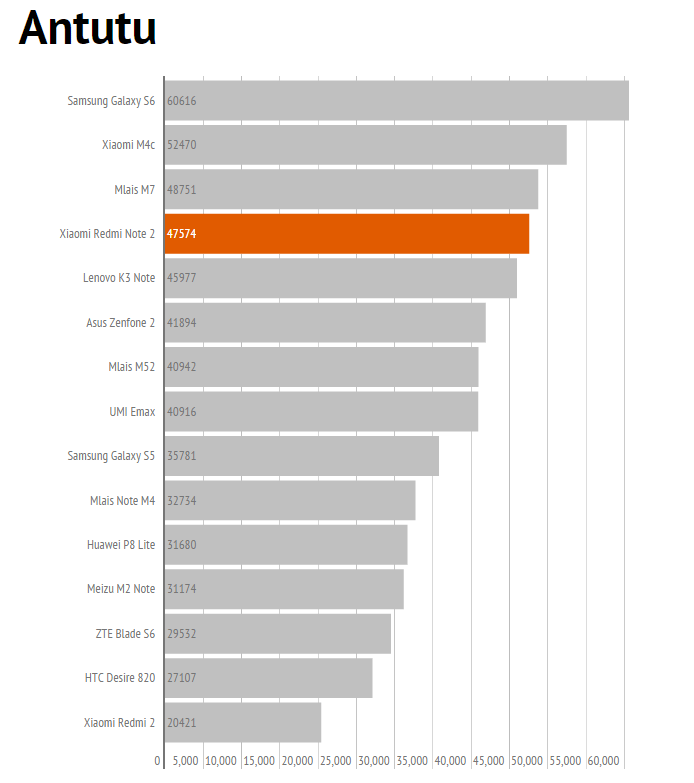
Anyway, in Antutu the Redmi Note 2 scored 47574, which is pretty good. However, it’s not much faster than MT6752 devices, and it’s actually slower than some MT6752 we had a chance to test (namely those with 3GB of RAM).
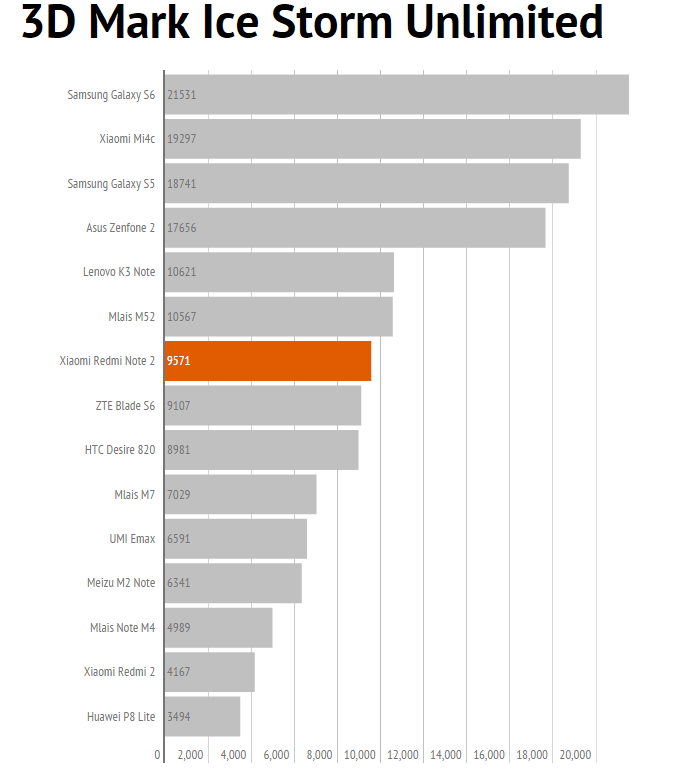
In 3D Mark Ice Storm Extreme we ended up with 9571 points, placing the PowerVR G6200 halfway between the Mali-T760 used in MT6752 chips and the Adreno 405 in the Snapdragon 615.
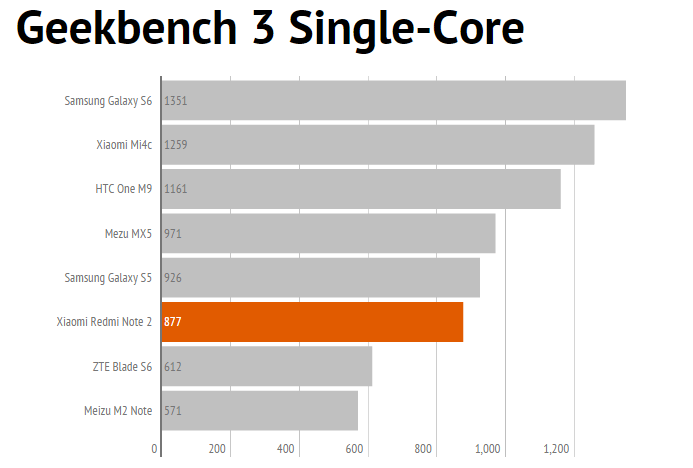
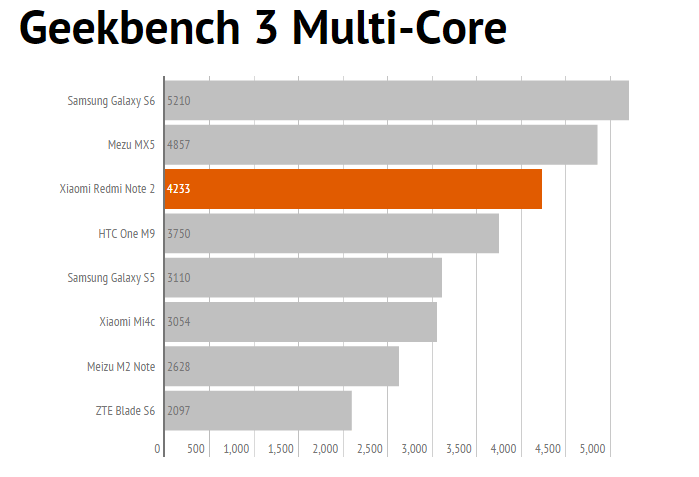
Geekbench reported a single core result of 877 and a multicore score of 4233. Both numbers are pretty good for a Cortex-A53 part. Actually, the single-core score is roughly on a par with 32-bit big cores like the Cortex-A15 and The Krait 400 (Snapdragon 800).
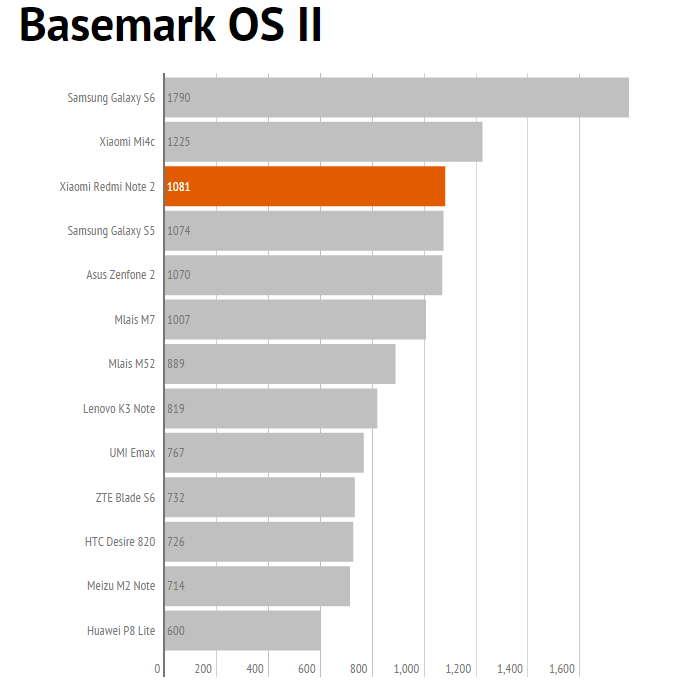
In Basemark OS II, the X10 manages to pull away from the MT6752, with a score of 1081. This barely places it ahead of the Samsung Galaxy S5 and Intel-based Asus Zenfone 2. We’d call it a draw because the results are so close, but it’s a good showing for the MediaTek chip.
Bottom line – the Xiaomi Redmi Note 2 is noticeably faster than the Meizu M2 Note, but it doesn’t manage to pull ahead of the Lenovo K3 Note, which has been around for months and sells for about $20 less.
Audio, Display and Camera Quality
The original Redmi Note sported a 720p display, while the second generation bumps up the resolution to 1080p in the same 5.5-inch format. Display quality is good for this price bracket, although the panel is not on par with the 5-inch Mi4c. This may be unfair, because the Mi4c costs roughly 40% more, so let’s take a look at the competition. In our opinion, the Redmi Note 2 has a vastly better display than the Lenovo K3 Note, but we feel it’s slightly inferior to the display on the Meizu Note M2. The latter is a close call and could be a matter of taste.
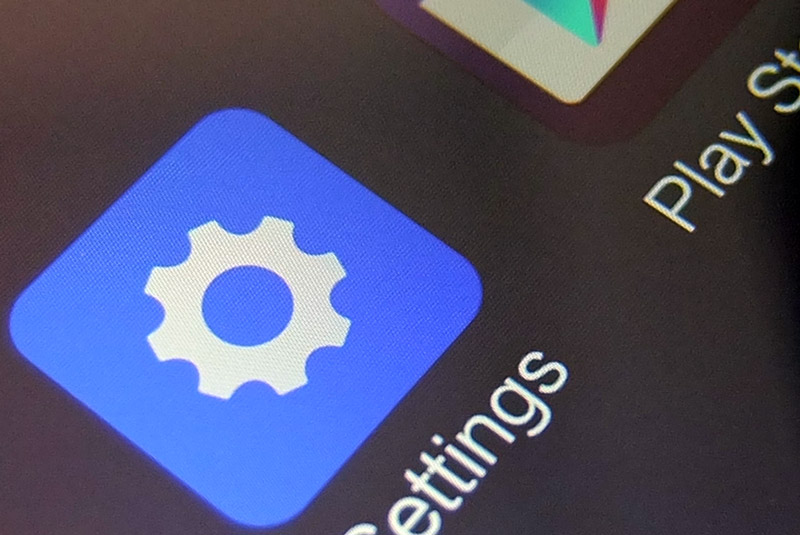
A few welcome software tweaks are on board as well, so you can tweak the saturation and colour temperature.
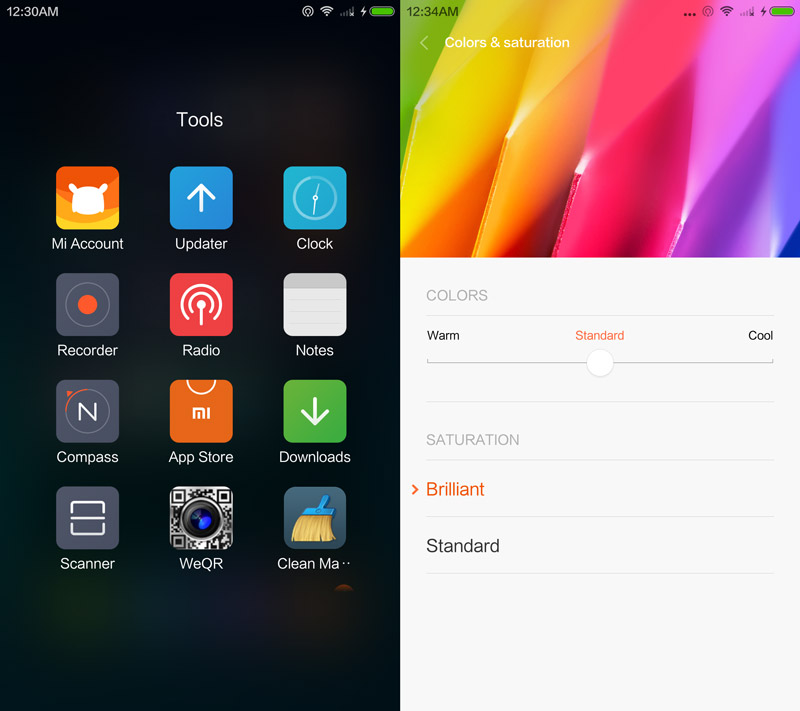
Audio quality is good. We don’t often get to see a noise cancelling microphone on such a cheap device, but Xiaomi managed to get it in there. The rear speaker isn’t very powerful, but it delivers excellent sound quality, with very little in the way of distortions (and a healthy dose of bass).
The camera is a mixed bag. It’s not bad, but we feel Xiaomi are overselling it. Yes, it has a new sensor with phase-detection auto-focus (PDAF), but it’s behind a slow f/2.2 aperture, which means it’s not that good in low light situations.

The slow aperture is especially problematic because Xiaomi’s camera software has a habit of aggressively going after noise in low-light shots, killing a lot of detail in the process.
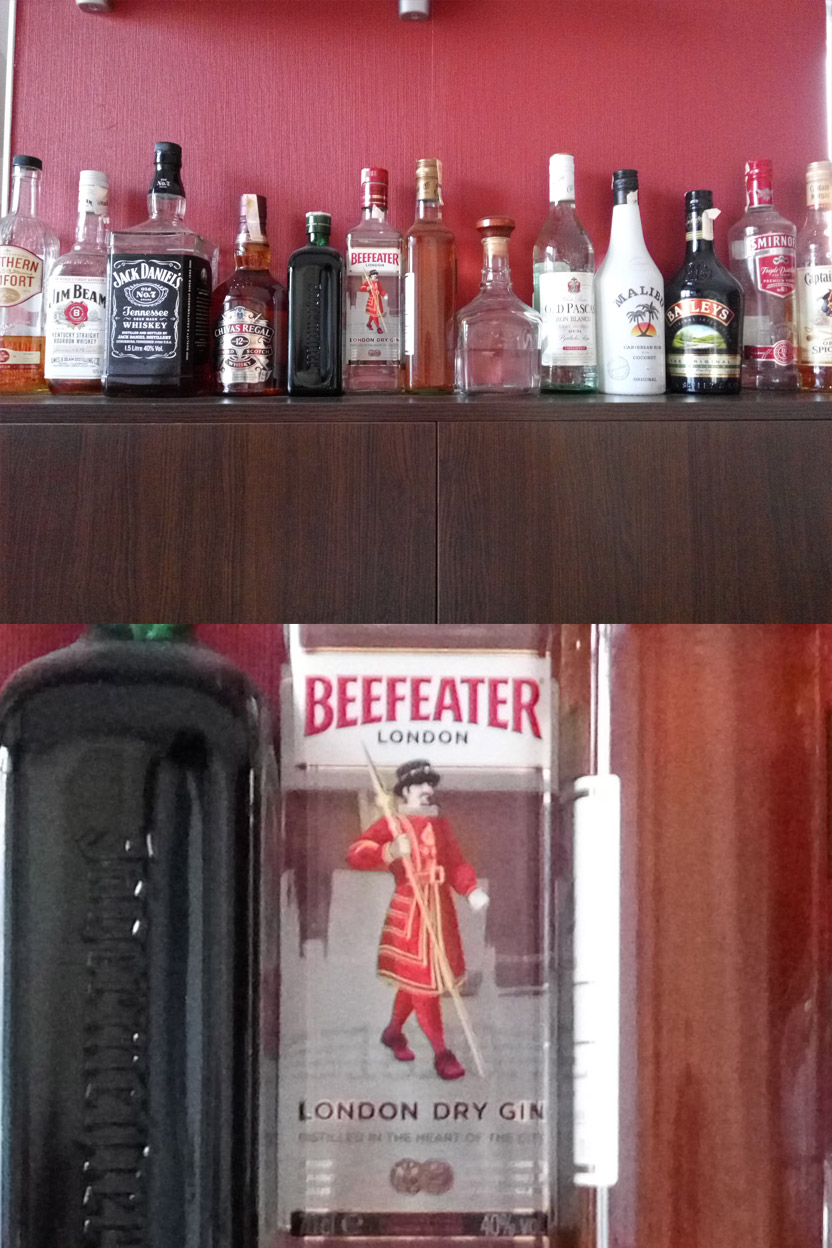
Basically, it feels like Xiaomi keeps using the same aggressive noise reduction regardless of the aperture and sensor in its phones. We are confident that the camera could deliver better results with a few software tweaks, matching the noise reduction to the capabilities of the sensor and lens assembly, but for some reason Xiaomi seems to have dropped the ball in this department.

The good news is that focus is very fast, as is HDR mode. Daylight shots are quite good.
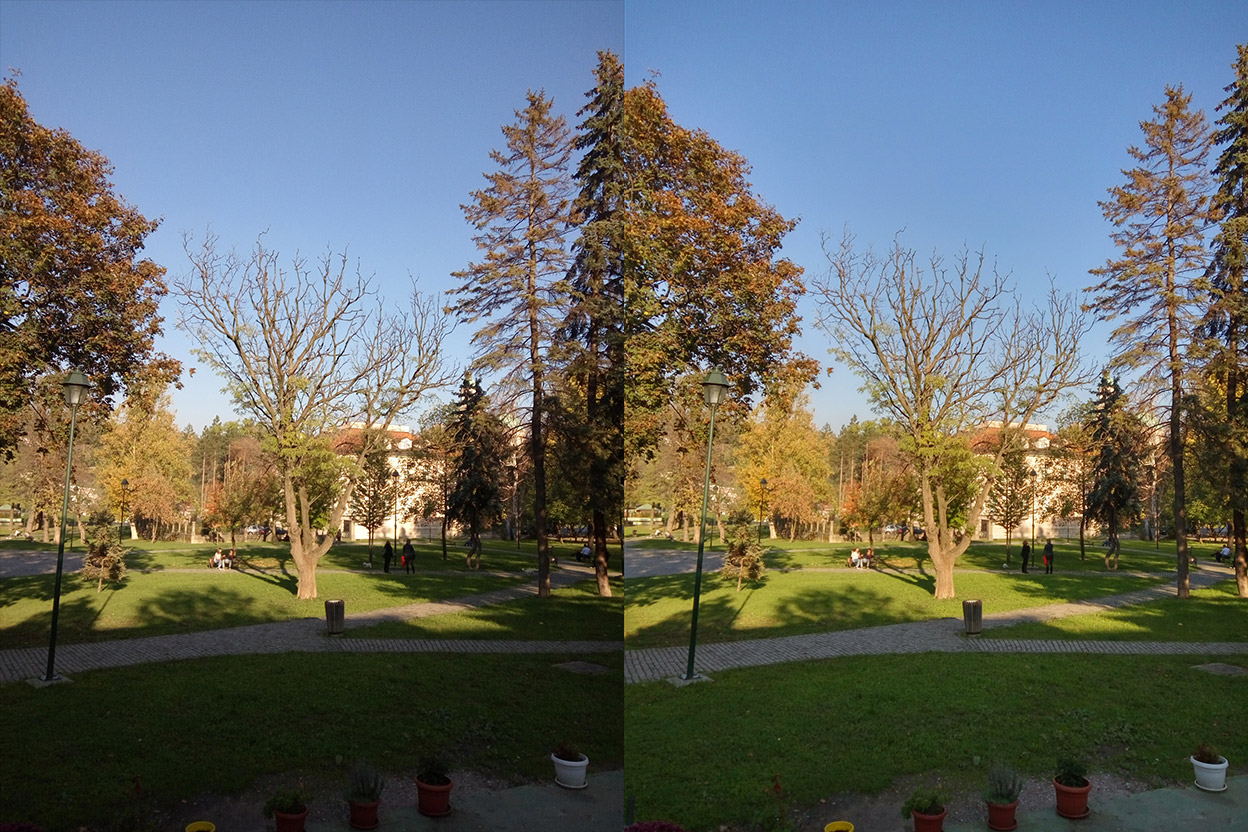
HDR mode is very fast and the results are good, too.
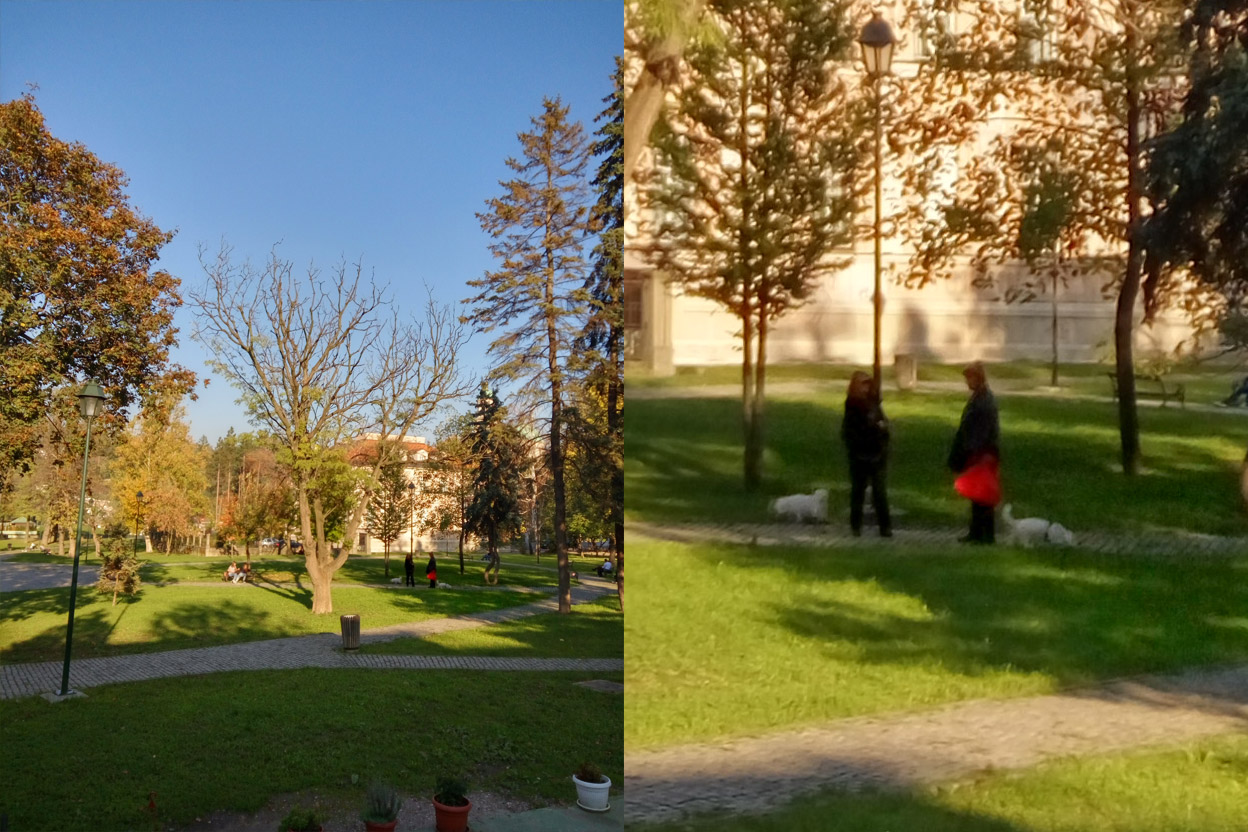
There's not a lot of ghosting, but on the other hand, a lot of detail is lost, as the 100% crops illustrate.
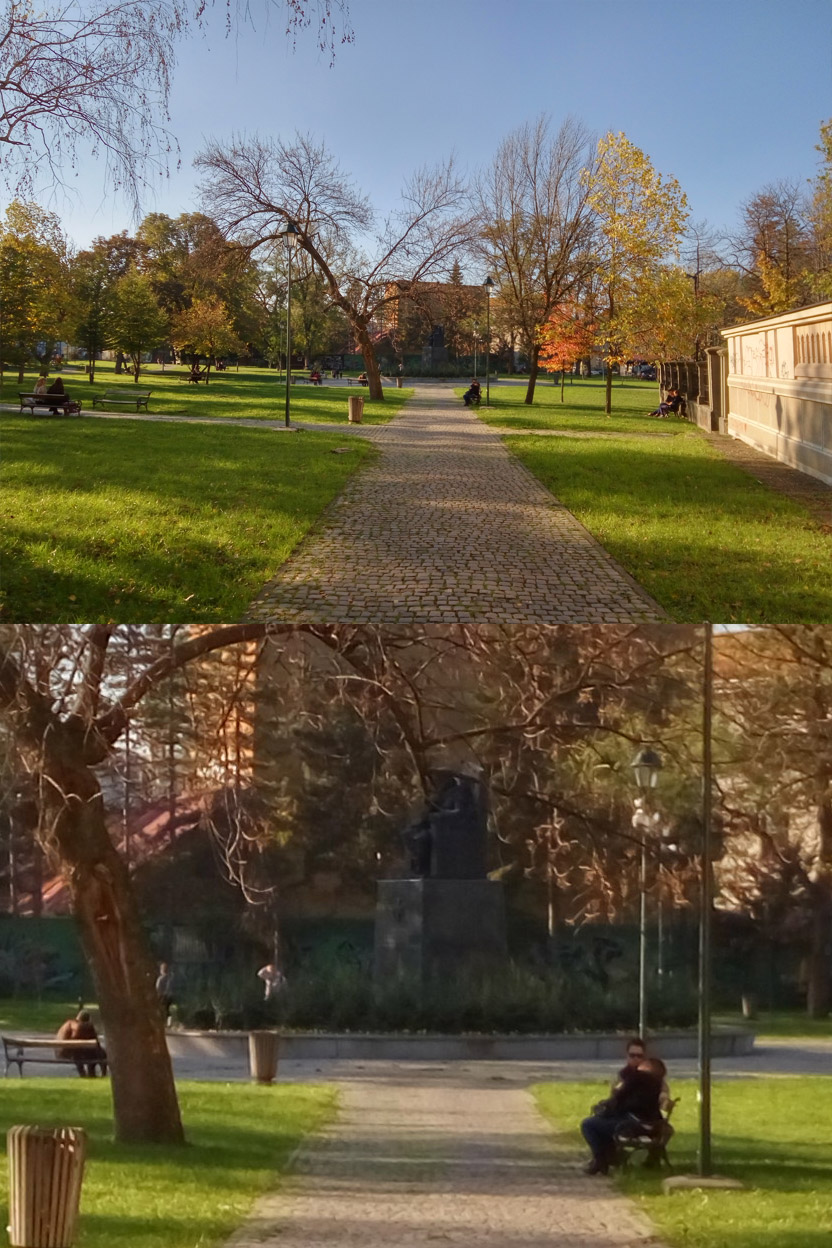
Unfortunately, when all is said and done, the Xiaomi Redmi Note 2 sports an average camera and we feel Meizu did a better job with the M2 Note. However, we did like the fast and reliable HDR mode.
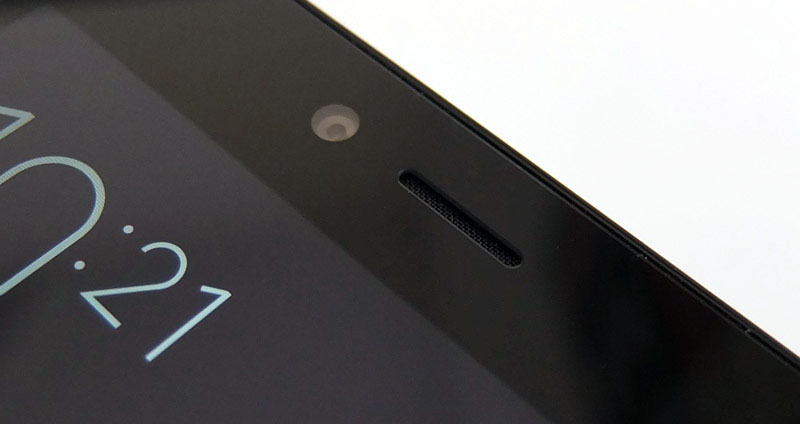
The front-facing camera, with a 5-megapixel sensor behind an f/2.0 aperture and 85 degree lens, does a relatively good job. While the main camera might not be the best one in this segment, the selfie cam is right up there with the best in class.
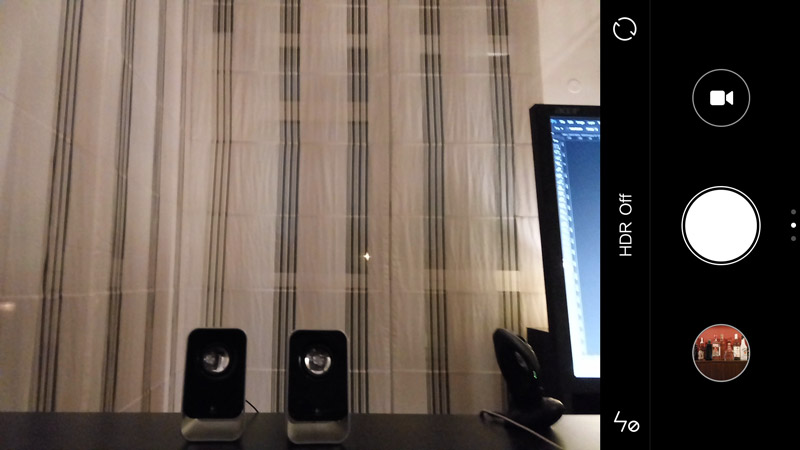
The MIUI camera app user interface is top notch, no complaints here.
OS, UI and Everyday Use
For some reason, Xiaomi decided to ship the Redmi Note 2 with Android 5.0.2 and MIUI 6, without waiting for MIUI 7. We already had a chance to play around with MIUI 7 and Android 5.1 on the Xiaomi Mi4c, and we can report that the new version is a nice upgrade. However, it’s nothing to cry about since an OTA update for the Redmi Note 2 should be rolling out in a matter of days.
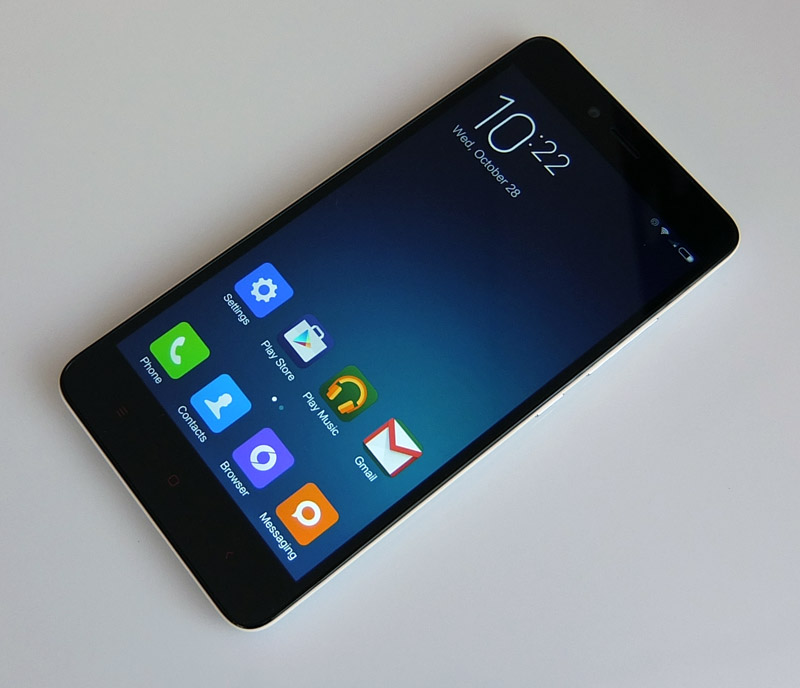
MIUI is an aesthetically pleasing Android skin, although it can be a bit of a memory hog. While it has a reputation for adding useful features before they show up in stock Android, this sort of works both ways, so MIUI is sometimes late to the party. For example, you can’t expand or dismiss notifications from the lock screen, and this will be quite annoying for users coming from stock Android.
Be as it may, MIUI offers a host of advanced features and customisation options, so if you like to play around with the appearance of your device, or control a lot of stuff that most average users don’t care about, it’s a pretty good flavour of Android.
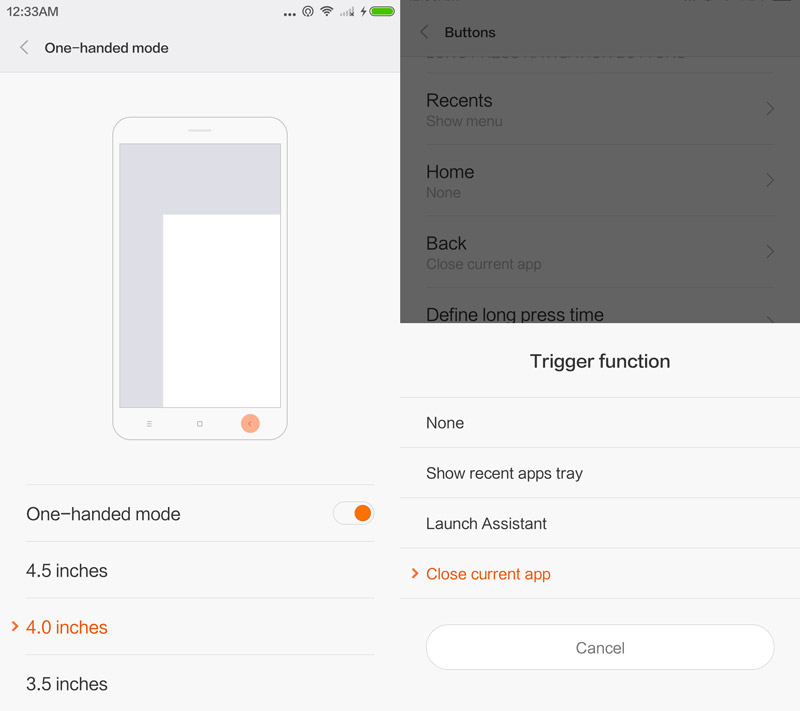
We appreciate MIUI’s useful features, such the ability to launch the torch app from the lock screen with a long press of the home button, or to go into one-handed mode with a quick swipe between the capacitive navigation buttons (you can set 4.5-, 4-, and 3.5-inch layouts). It’s obvious that quick access to a customisable one-handed mode is a useful addition on such a big device, so kudos to Xiaomi. Going back to MIUI 6 from MIUI 7 was a bit of a problem because there is no double tap to wake function, which is also very useful on phablets. Luckily, this should be sorted out with the update, which is just around the corner.
Our biggest problem on the software side was the international ROM included on this particular sample. It comes with a fair amount of annoying bloat, so our suggestion would be to replace it with a new MIUI 7 ROM as soon as it becomes available.
Software aside, what’s the Redmi Note 2 like to live with, as a daily driver?

Long story short, it’s good, but by no means perfect. Like all phablets, it can be unwieldy and hard to pocket. The excellent one-hand mode compensates for this, but it can’t change the fact that you’re carrying around a plus-size phone.
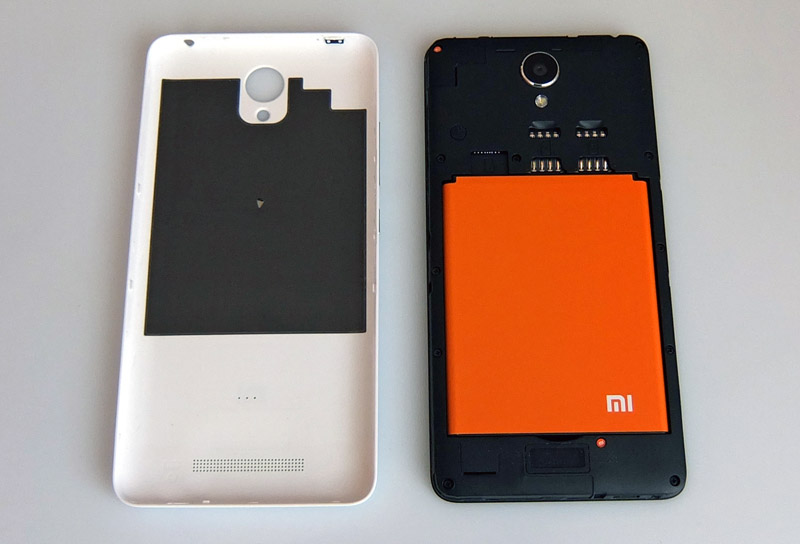
The back cover offers a lot of grip, but it feels too sensitive. We would rather go with the black or blue version, because we feel they will stand the test of time a bit better. Luckily, the back cover is replaceable and you should be able to get a different one for $10 or so. However, removing the cover can be tricky, as the shell is a very tight fit.

The added benefit of having a removable back cover is that you can use both SIM slots and the microSD slot at the same time, plus you can swap out the battery. Although carrying around a replacement battery and going through the delicate process of removing the back cover doesn’t sound very practical, it’s nice to know you can buy and swap out the battery on your own.
So what about battery life? Sadly, there is a lot of room for improvement on the battery front. The 2GHz processor and bright, high-res screen obviously take a toll on battery life. Xiaomi claim MIUI 7 will offer a significant improvement in battery life, but we wouldn’t bet on it. We did manage to get a day and a half of moderate use out of the new Redmi, but if you’re a heavy user, you’ll be lucky to get a day. It simply doesn’t last as long as we expected, and the Meizu M2 Note offers a lot more life on a single charge. The other issue is that there’s no fast charging technology on board. We hope Xiaomi can address the issue with the MIUI 7 update.
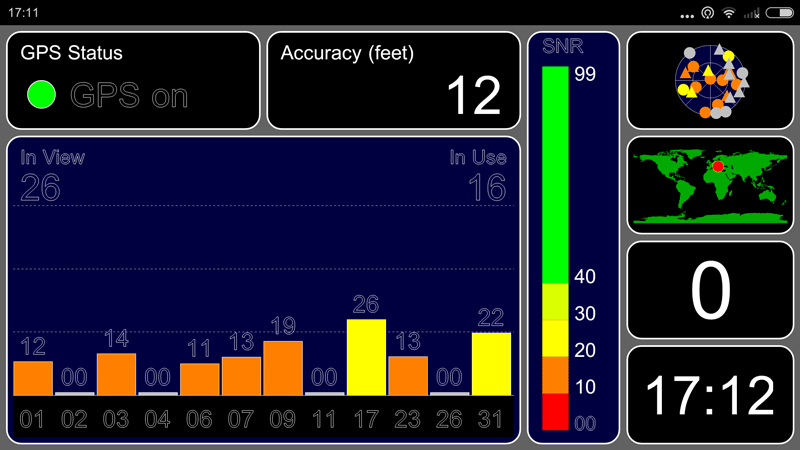
The Redmi Note 2 had no trouble getting and maintaining a GPS lock. The signal isn’t too powerful but the indoor lock we got from one of our home offices was very accurate.
Conclusion
The Xiaomi Redmi Note 2 is a great update, but it also falls short in some departments. This wouldn’t be a big deal 12-18 months ago, but the budget phablet space has become so insanely competitive overt the past year or so, making every foible count.
Xiaomi said it plans to sell more than 10 million Redmi Note 2 units this year, and it should have no trouble doing so. This is a truly great product, it packs good hardware in a quality body, with one of the best Android skins out there.
However, it’s not perfect.
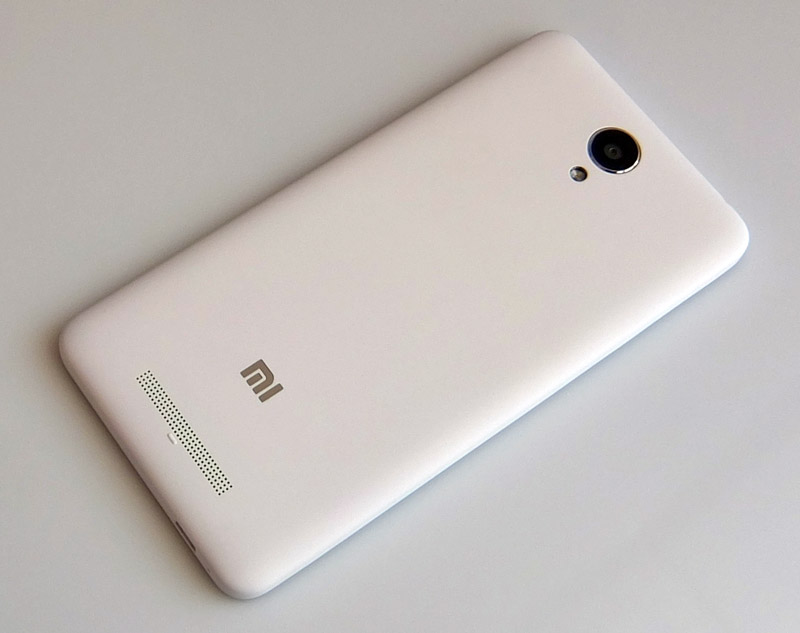
The camera could have been better, and we suspect it could have benefited from a few software tweaks. Battery life is unimpressive. We can only hope these issues will be addressed in future software updates, but for the time being they are dragging the Redmi Note 2 down.
While it trumps the Lenovo K3 Note in almost every respect, save for battery life and value, the Meizu M2 Note is a more serious contender with a caveat – its 1.3GHz processor is a lot slower, but the Meizu can soldier on for a few more hours than the Redmi. The Meizu also has a somewhat better camera, with a dual LED flash. It’s really a matter of personal preference, some people will choose performance over battery life, while others will do the opposite.
What about value? While the Redmi usually comes out on top, it’s also 10-15% more expensive than Lenovo’s and Meizu’s budget phablets. The Prime version, equipped with a faster 2.2GHz Helio X10 processor and 32GB of internal storage, is currently selling for roughly $10-20 more, and it might be worth the premium if you need more storage (eMMC 5.0 is a lot faster than your average microSD card). A faster CPU? No thanks, this one is fast enough, not to mention power hungry.
The Xiaomi Redmi Note 2 is not a perfect budget phone, but it comes damn close to being one. In most respects, it manages to pull away from the competition, while keeping the price incredibly low. We recommended the Lenovo K3 Note and Meizu M2 Note as excellent budget phones, and the same goes for the Redmi Note 2: It’s better in most respects, yet it costs just a few bucks more than its closest competitors.
Now only if Xiaomi, Meizu, Lenovo and other Chinese brands started churning out similar products in the 5-inch form factor…
Xiaomi Redmi Note 2 Pros and Cons
Pros:
- Performance
- Design and build quality
- Audio quality
Cons:
- Unimpressive camera
- Battery life
- Bloatware on international ROM

